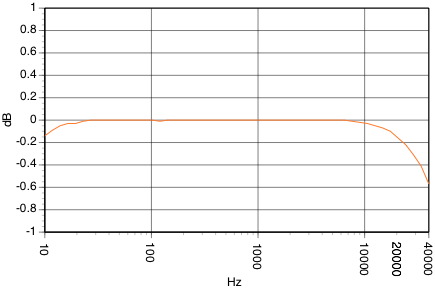Review: Bottlehead Quickie tube preamp Page 4

TEST BENCH
Frequency response (1 volt RMS, unity gain) 20 Hz to 20 kHz, -0.05/-0.14 dB 10 Hz to 40 kHz, -0.14/-0.57 dB
Signal-to-noise ratio (1 volt RMS, maximum gain) -93.0 dB (A-weighted) -87.4 dB (unweighted)
THD+N (1 volt RMS) 0.75% (unity gain) 1.78% (maximum gain)
Maximum gain (1 volt RMS) 7.6 dB
Crosstalk (1 kHz) -60.4 dB L to R -60.6 dB R to L Channel tracking error (1 kHz, unity gain) 0.06 dB
Input/output impedance (1 kHz) 100 Kohms/1.88 Kohms
Measurements were made using an Audio Precision System One Dual Domain analyzer and a NTI Minilyzer handheld analyzer. Some of the measurements of the Bottlehead Quickie are very good for a primitive tube preamp, while some of them fall well short of modern standards.
Frequency response (shown in the chart above) and signal-to-noise ratio are impressive, comparable to what you’d see in some much fancier tube gear and even some solid-state gear. The frequency response comes as a surprise given that the outputs are capacitor-coupled, a design that I expected might attenuate the very deepest bass frequencies. Signal-to-noise ratio is also much better than expected.
Distortion is high, which doesn’t come as a big surprise given the tubes and the simplistic circuit. Channel separation is OK for what the Quickie is but 40 dB less than many modern products achieve. Gain is low, although probably adequate to get ample volume from your system.—B.B.
- Log in or register to post comments






























































